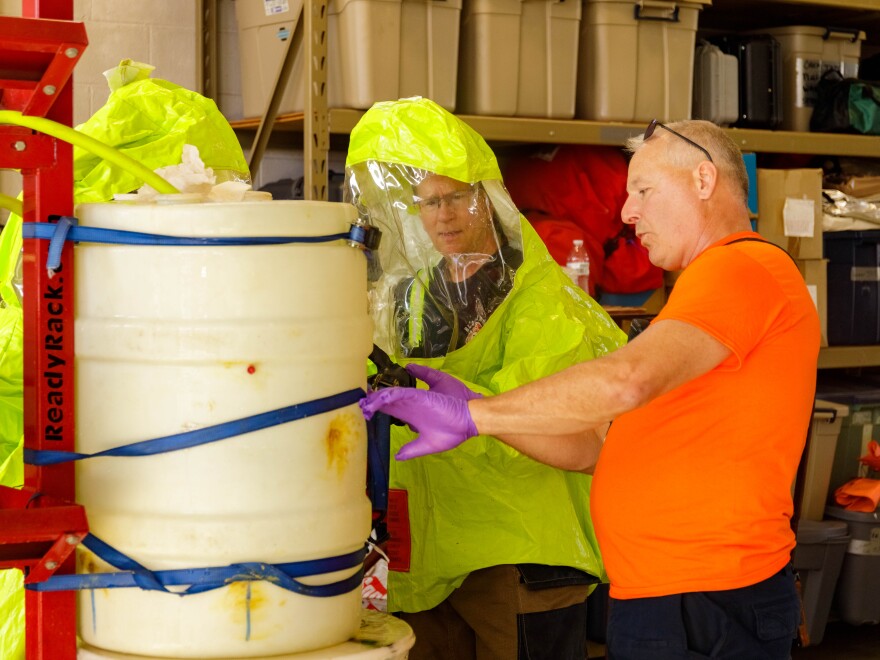The Bloomington Firefighters Local 49 union recently hosted its third Fire Ops 101 event, an opportunity for community members to spend a day in the life of a firefighter.
President of Bloomington Firefighters Local 49 Eric Hall said they host the event to educate people on the needs of the fire department. Attendees at the Sept. 30 event included state lawmakers and Bloomington City Council members.
Hall said they want people to see what firefighters do every day, what their struggles are, what resources they have, and what resources they need for the future.
“Every time we do this it’s usually the same thing, [the participants] have a new respect for what we do,” Hall said.
The scenarios demonstrated in Fire Ops 101 are real-life examples of what they would see in day-to-day scenarios on the job, said Hall.
“EMS calls are every day. Accidents are pretty much every day. Severity varies back and forth. Fires are not as much as they used to be, so it’s important that we have our members trained up to that level. That way when that call comes in they’re ready," he said.

Scenarios
Hall said the flashover simulator is the most popular scenario. They put the participants into full gear with an air pack.
“We bring them inside, we sit them down on the floor, and then we have a little presentation talking about fire growth. One of the members is up there and we light a can in the corner of the room on fire. [The fire] will slowly start to roll up the wall and start rolling over the ceiling, and it catches everything in there on fire. And then we show them that by shutting the door it limits the oxygen. By just shutting the door it puts the fire out. As soon as we open that door again the fire immediately lights back up. It’s showing them how fast fire grows, also the importance of education as a safety piece and why we educate people to shut the door behind you when you’re leaving," Hall said.
Hall said the other scenarios demonstrated in Fire Ops 101 included searching for victims of a fire, what to do at a car accident, an EMS call where a critical patient goes through cardiac arrest, and a biohazard cleanup.
“One of the other things we do as a department is we are the Division 41 hazmat team for the county and several neighboring counties. So [participants] will go through a hazmat scenario to see some of the resources that we have,” said Hall.

Staffing and stations
The main purpose of Fire Ops 101 this year, Hall said, was to educate participants about staffing at the fire department and station locations.
“The NFPA standard in the U.S. is a 4-minute response time from the time that we leave the station to arrive, and currently we’re not meeting that. So explaining why we need new stations in certain locations and educating them of the potential need in the future of trying to meet our growing community’s needs. And with those scenarios it shows why having so many people there as fast as we can gets that job done and has a better outcome for the citizens of our community,” Hall said.
Staffing for the fire department has also been a problem, said Hall.
“Right now it’s really difficult to recruit and retain firefighters. And it’s not just in our community. It’s across the state of Illinois, it’s across the U.S.”
Within the last couple of years, Hall said the Bloomington Fire Department has tried new methods of recruitment.
“Now we’ve kind of changed where we’re trying to actively go out and recruit within our own community, within the state, and even the country right now, and try to get people interested to come to the city of Bloomington," he said.
Hall said the department has been asking itself the question: “What can we do differently that’s going to bring people to our department, get them trained, and keep them here to protect our citizens?”



